By Neal Lemery for the Tillamook County Pioneer
“Tillamook County is Number One!”
Who doesn’t like to hear that statement about one’s community? There’s that sense of pride, and a feeling of accomplishment. Time for some applause and even a cheer, except when you are at a conference of 150 medical professionals and drug treatment experts, and the topic is the national opioid addiction crisis.
Tillamook County is the worst, with the highest death rate in a state that has the fourth highest overdose rate. While we Oregonians are proud of our innovation and progressive thinking, leading the nation on many challenging issues, Oregon is dead last, at the very bottom, #50, in the availability of drug treatment.
This 2019 Opioid and Substance Abuse Summit in Seaside on October 14 is the fourth annual gathering of regional health care providers, and others involved in and concerned about our substance use disorder crisis. Organized by the Columbia Pacific Coordinated Care Organization, the Summit marshals resources and educates the community on how to respond to the deepening opioid addiction crisis that is ransacking our communities. Columbia Pacific coordinates health care under the Oregon Health Plan and the Affordable Care Act for Tillamook, Clatsop and Columbia counties, and is part of Care Oregon, a non-profit organization focused on health care services.
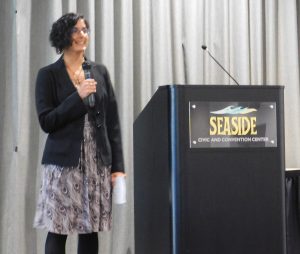
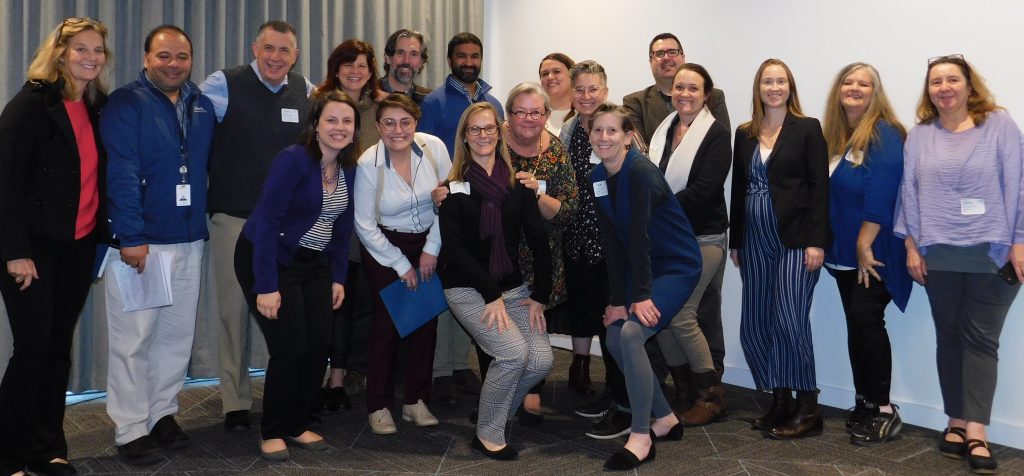
In Oregon, one to two people a day die from drug overdoses. Five people die from the effects of alcohol every day. That’s over 2100 Oregonians a year. Oregon has the fourth highest drug addiction rate in the nation. And, in neighboring Clatsop County, 40% of teens vape tobacco or pot, compared to the statewide usage rate of 16%. The Oregon coast leads the state in sales of alcohol per capita.
The costs of drug addiction is staggering. The collective emotional pain is inconceivable. The economic cost to Oregon in terms of loss of earning capacity and economic value is $5.8 Billion a year. That’s Billion with a B.
There was other dismal, alarming news. Yet, the room was alive with energy, enthusiasm to respond, and a strong desire to meet the needs of our families, friends, and neighbors.
“We can do this, and we are taking this epidemic on,” was a frequent statement.
Doctors, counselors, emergency responders, and other community professionals took the stage to discuss new medications, response protocols, and a variety of treatment regimens — programs that are up and running in rural communities, including our county, number one in drug deaths. Lively discussions were had on the interrelated high rates of intimate partner violence, suicide, illiteracy, and people underserved by the health care system. The crisis is complex and multi-dimensional, and touches all of our lives.
In the background was the disappointing recent news that Oregon Governor Kate Brown has ordered state government to delay implementation of the legislatively mandated strategic plan for a recovery-oriented system of care. The plan was developed by a large and diverse team of treatment professionals using best practices and current medical science.
We had frank, direct, and often deeply disturbing discussions, often with personal and family stories of addiction, despair, hopelessness, and, ultimately, with awareness of the anxiety and loneliness which fuels the drug use. There can be redemption, there is hope, and there is a growing diverse and empowered recovery community.
Drug and mental health courts and outpatient and residential treatment facilities in rural communities are opening. Peer coaching, 12 step programs, and health insurance plans willing to fund many forms of treatment are springing up. First responders and concerned citizens are arming themselves with the opioid antidote Naloxone, which can take the form of a nasal spray safely administered by a lay person and available without prescription. The drug neutralizes the drug causing an overdose and saves people from certain death. Other drugs now becoming available tackle the wide range of addictive symptoms and conditions.
“There is hope,” one physician said, “and there also needs to be compassion, understanding, and awareness that addiction is a medical problem, not a character flaw. This is a crisis of culture and education.”
Effective response to this epidemic involves trauma-informed care, focusing on a person’s response to trauma experienced throughout life. Adverse childhood experiences (ACEs) cause the brain and the body to retain trauma throughout our bodies; the trauma response paralyzes our coping mechanisms, and shuts down healthy and healing responses. The more trauma we experience, the less the mind and body are able to deal with and enjoy life.
We self-medicate, trying to ease the anxiety, the pain, and the emptiness we have experienced. Advertising and social expectations point us in the direction of drugs. Tobacco, alcohol, and opioids are the most poisonous, the most deadly substances we use, yet they are our legal drugs and the most highly marketed and available drugs.
The real “gateway drugs” are freely available at the neighborhood store and where we gather to “relax and have a good time”.
Drugs and alcohol affect the brain’s neural receptors for levels for dopamine, a pleasure inducing chemical the brain releases. Trauma inhibits the body’s ability to feel joy and contentment, and we turn to chemicals in order to reconnect with our natural desire for a sense of well-being and tranquility. Yet, the temporary pain-killing effects of our drugging fades with continuing drug use, moving our desired feelings of joy and contentment even further away from being in our lives and limits our healthy response to dopamine and other endorphins. Drugs are a self-fulfilling prophesy of pain and emptiness despite our desire to heal and feel “normal” again.
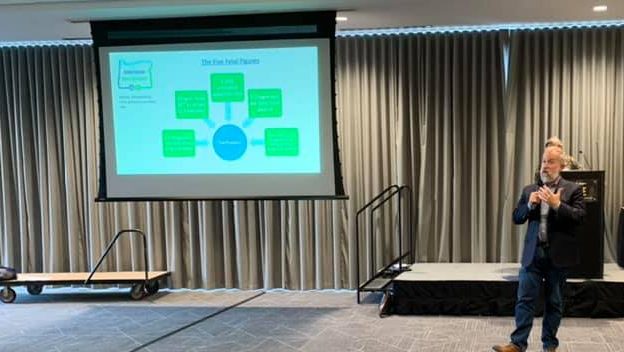
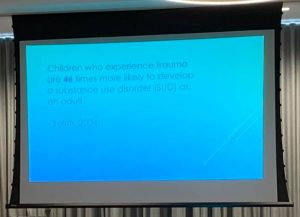
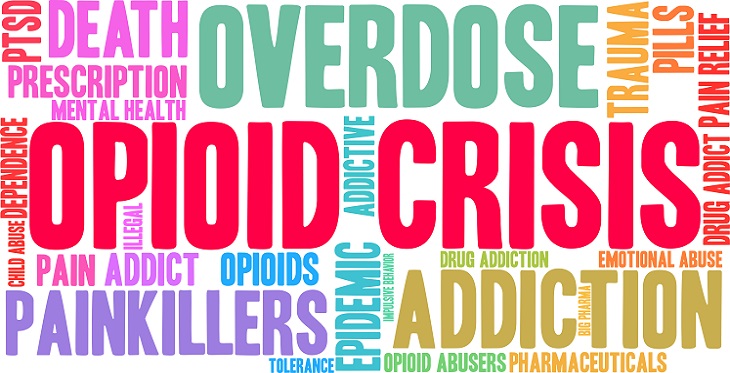
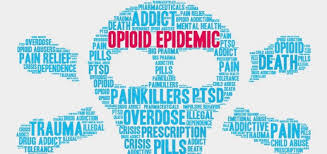
Traumatized kids are 46 times more likely to develop substance abuse disorders than kids who have not been traumatized. Schools now are implementing educational practices and activities that are trauma-informed, approaches that help heal and restore a sense of personal well-being and emotional health.
One physician who shared her story of addiction, chaos, and near death spoke of her first use of heroin as generating a sense of peace and relief she had always sought, but had never achieved. Heroin made her life bearable and the traumas in her life faded away at last. Life became beautiful, until her life spiraled down into deeper chaos.
The tool chest of recovery and health is gaining new tools, yet we are a culture of drug use, instant gratification, and often unattainable expectations of perfection and acceptance. Medically assisted treatment (MAT) is becoming part of the new standard of care for treatment providers, along with education, peer coaching, and the community gaining understanding that addiction and trauma are interwoven, that addiction is best understood as a medical issue, a condition that can be effectively treated.
Access to treatment remains a critical issue, and is very often a barrier to getting help. Yet, widespread availability of naloxone, educated emergency responders and health care professionals, and a broader application of medically assisted treatment are making a difference. CODA, a Portland-based non-profit provider of treatment for substance use disorders, is opening an opioid treatment program in Seaside later in fall, 2019. This program will offer medication-assisted recovery services for the whole region, and will be an excellent local resource for those seeking recovery from addiction. Trauma-informed responses by the criminal justice system and social services are being implemented.
At the end of the day, after dozens of stories of agony, despair, hope and redemption, there was a spirit of hope in the room. We are taking on this epidemic, we are finding the tools, and we are able to respond and attack this problem, this epidemic.
We can be number one, not in the number of deaths, but in the availability of remedies, of treatment, and salvation and hope.
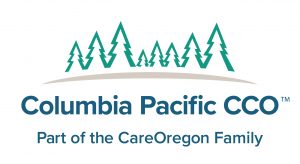
About Columbia Pacific Coordinated Care Organization
Established in September 2012, Columbia Pacific CCO coordinates health services for more than 24,000 Oregon Health Plan members in Columbia, Clatsop and Tillamook counties. For more information, please visit www.colpachealth.org.

